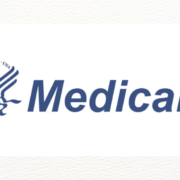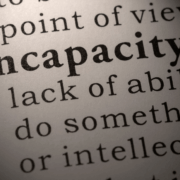Medicaid Planning for Senior Entrepreneurs: Protecting Business Assets and Legacy
Senior entrepreneurs face financial risks from long-term care costs that standard Medicaid planning often overlooks due to the complexities of business ownership. Proactive Medicaid planning is vital for senior business owners to protect both personal and business assets. Early strategic measures offer more options for qualifying for Medicaid while preserving the business and securing their legacy. Delaying planning can significantly limit choices and increase the risk of asset depletion.
Comprehending Medicaid Eligibility and Asset Rules for Seniors
Navigating the path to Medicaid eligibility requires a clear grasp of its fundamental rules, particularly concerning income and assets. These regulations can be complex and often vary by state, making professional guidance essential.
Basics of Medicaid for Long-Term Care
Medicaid’s long-term care benefits are intended for individuals who meet specific financial and medical necessity criteria. Key financial aspects include:
- Income and Asset Limits: Applicants must have income and assets below state-stipulated thresholds. These limits can differ significantly from one state to another. For married couples where one spouse needs care (the “institutionalized spouse”) and the other remains at home (the “community spouse”), there are special provisions to prevent spousal impoverishment.
- Look-Back Period: Federal law mandates a “look-back period,” currently five years (60 months) prior to the Medicaid application date. During this time, any transfers of assets for less than fair market value can result in a penalty period, delaying Medicaid eligibility. This is a critical factor in any asset protection strategy.
- Exempt Assets vs. Countable Assets: Not all assets are counted towards Medicaid eligibility limits. “Exempt” assets, such as a primary residence (up to a certain equity value), one vehicle, personal belongings, and pre-paid funeral plans, are typically not included. “Countable” assets, which include bank accounts, stocks, bonds, and most other liquid assets, are subject to the limits. The classification of business assets is a particularly complex area.
How Business Assets are Viewed by Medicaid
The treatment of business assets under Medicaid rules is multifaceted and depends on several factors, including the business structure, its income generation, and its accessibility to the owner.
“Available” vs. “Unavailable” Assets: Medicaid considers an asset “available” if the applicant has the legal right, power, and ability to liquidate it. If a business interest cannot be readily converted to cash or accessed by the owner due to legal restrictions (e.g., partnership agreements, bona fide operational needs), it might, in limited circumstances, be deemed unavailable. However, this is a high bar to meet.
Income-Generating vs. Non-Income-Generating Businesses: Often, if a business is actively producing income that is necessary for the owner’s (or community spouse’s) support, and that income is treated properly under Medicaid income rules, the assets essential for producing that income may receive specific consideration. However, if a business holds primarily passive investments or non-income-producing property, its assets are more likely to be viewed as countable.
Specific Business Structures:
- Sole Proprietorships: Assets owned by a sole proprietorship are generally considered personal assets of the owner and are therefore countable for Medicaid purposes. There is no legal distinction between the owner and the business.
- Partnerships (General, Limited, LLP): The value of the partnership interest itself is an asset. The terms of the partnership agreement regarding an owner’s ability to access or liquidate their share are relevant. Assets owned by the partnership itself may or may not be directly attributed to the partner, depending on the agreement and state rules.
- LLCs (Single-Member, Multi-Member): Similar to partnerships, the ownership interest (membership units) in an LLC is an asset. For a single-member LLC, assets may be treated much like a sole proprietorship unless careful structuring is in place. Multi-member LLC operating agreements can dictate rights to distributions and liquidation, influencing availability.
- S-Corps and C-Corps: Shares of stock in a corporation (S-Corp or C-Corp) are assets. Their value is generally countable. For closely-held corporations, determining fair market value and accessibility can be complex.
- Real Estate Holdings within the Business: If the business owns real estate, its value contributes to the overall value of the business interest. Whether the property is essential for operations or held as an investment can influence its treatment.
Strategies for Protecting Business Assets
For senior entrepreneurs, a variety of strategies exist to shield business assets from long-term care costs when undertaking Medicaid Planning for Senior Entrepreneurs. These approaches often involve restructuring, trusts, succession planning, and specific financial instruments.
Business Structure Optimization for Medicaid Planning
The way a business is legally structured can significantly impact asset protection for Medicaid purposes.
Re-evaluating Current Structure: It may be beneficial to assess whether the existing business entity (e.g., sole proprietorship, partnership, LLC, corporation) provides the best footing for future Medicaid planning. Sometimes, converting to a different structure, well in advance of needing care, can offer advantages, though this decision must also weigh tax and liability implications.
Transferring Business Ownership: Carefully planned transfers of business ownership can be an effective strategy, but they must navigate the five-year look-back period.
- Gifting Strategies: Outright gifts of business interests or fractional gifts over time can reduce the owner’s countable assets. However, these must be completed more than five years before a Medicaid application to avoid penalties. Proper valuation is essential.
- Family Limited Partnerships (FLPs) or Family Limited Liability Companies (FLLCs): These entities can be used to consolidate family business assets, allowing senior members to gift or sell minority interests to younger generations, potentially at discounted valuations (though these discounts are often scrutinized by Medicaid). Control can be retained by the senior member as a general partner or managing member, but this requires careful drafting to avoid the assets being deemed “available.”
- Grantor Retained Annuity Trusts (GRATs) or other irrevocable trusts: While GRATs are more commonly used for estate tax planning, variations of irrevocable trusts are central to Medicaid planning.
Asset Protection Through Trusts
Trusts are a cornerstone of sophisticated Medicaid planning for Senior Entrepreneurs.
Irrevocable Trusts:
- Why they are key for Medicaid planning: Assets properly transferred to a well-drafted irrevocable trust are generally no longer considered owned by the grantor (the person who created the trust) for Medicaid eligibility purposes after the five-year look-back period. This “removes” the assets from the grantor’s countable estate.
- Specific types (e.g., Medicaid Asset Protection Trusts – MAPTs): A MAPT is a specialized type of irrevocable trust designed specifically to hold assets, including business interests, while allowing the grantor to potentially receive income from the trust if structured correctly. The principal, however, is protected for beneficiaries.
- Look-back period implications: Transfers to an irrevocable trust are subject to the five-year look-back period. Planning must begin well before care is anticipated.
Business Interest Trust: This term can refer to a MAPT or other irrevocable trust specifically funded with business interests. The trust document would detail how the business is to be managed, who benefits, and how distributions are handled, all while aiming to protect the core assets from long-term care costs.
Business Succession Planning as a Medicaid Strategy
Integrating business succession planning with Medicaid planning ensures the business continues and assets are protected.
Buy-Sell Agreements: These agreements between co-owners or between owners and the business can stipulate how and when an owner’s interest will be purchased upon certain events (e.g., retirement, disability, death). A properly structured buy-sell agreement can establish a fair market value for the business interest and provide a mechanism for transferring it, potentially converting an illiquid business interest into cash that can then be planned for. The funding of such agreements (e.g., through insurance or promissory notes) is a key consideration.
Gifting or Selling to Next Generation: A structured plan to gift or sell the business to children or other chosen successors over time can gradually reduce the senior entrepreneur’s estate for Medicaid purposes. Sales must be for fair market value to avoid transfer penalties, often utilizing promissory notes.
Employee Stock Ownership Plans (ESOPs): For some larger, profitable businesses, an ESOP can be a complex but viable succession strategy, allowing the owner to sell their shares to the employees through a trust. This can provide liquidity to the owner, which then needs to be addressed in their Medicaid plan.
Long-Term Care Insurance for Business Owners
Private long-term care insurance can be a valuable tool in the overall plan.
The Role of LTC Insurance: LTC insurance provides benefits to cover the costs of long-term care services. Sufficient coverage can delay or entirely eliminate the need to apply for Medicaid, thereby protecting assets without complex legal structuring.
Business-Owned LTC Policies: In some cases, a business may be able to purchase LTC insurance for its owners/key employees, and the premiums might be tax-deductible for the business. This can be an attractive way to fund this protection.
Leveraging Annuities and Other Financial Products (with caution)
Certain financial products can play a role, but they must be fully compliant with Medicaid rules.
Medicaid Compliant Annuities (MCAs): An MCA is a specific type of single-premium immediate annuity that converts a lump sum of countable assets into a non-countable income stream for the applicant or their spouse. To be “Medicaid compliant,” the annuity must meet strict criteria: it must be irrevocable, non-assignable, actuarially sound (based on life expectancy), provide equal payments, and name the state Medicaid agency as a remainder beneficiary in the correct position. This is often a crisis planning tool.
Promissory Notes: A loan made in exchange for a promissory note can convert a countable asset (cash) into a non-countable income stream if the note is properly structured: it must have a term no longer than the lender’s life expectancy, require regular payments of principal and interest, and bear a fair market interest rate. These are often used in conjunction with gifting strategies.
Protecting the Legacy: Ensuring Business Continuity
Beyond asset protection for Medicaid eligibility, thoughtful planning focuses on ensuring the business itself can survive and thrive, thereby securing the owner’s legacy.
The “What If” Scenario: Incapacity and Succession
A sudden illness or incapacity can derail a business without a plan.
Power of Attorney (POA) for Business: Many people have a general durable power of attorney for personal finances, but a specific POA addressing business operations can empower a trusted agent to manage business affairs, make payroll, sign contracts, and handle other critical functions if the owner cannot.
Incapacity Clauses in Business Agreements: Shareholder agreements, partnership agreements, or LLC operating agreements should include clauses that define incapacity and outline procedures for decision-making or buy-out if an owner becomes incapacitated.
Designated Successor Management: Identifying and grooming potential successors—whether family members or key employees—is vital. This involves training, gradual transfer of responsibilities, and clear communication about future roles.
Valuation of the Business for Medicaid and Estate Planning
An accurate and defensible business valuation is foundational to effective planning.
Accurate Business Valuation: Medicaid agencies can scrutinize asset transfers. A professional business appraisal provides a credible basis for the value of business interests transferred through gifts, sales, or to trusts. It’s also essential for estate tax purposes and buy-sell agreements.
Minimizing Medicaid’s Valuation Impact: While one cannot artificially deflate value, legitimate valuation methodologies and discounts (e.g., for lack of marketability or minority interest, if applicable and defensible) can result in a lower, yet fair, valuation for planning purposes. This must be done by qualified professionals.
Communication and Family Involvement
Openness is key to a smooth transition and acceptance of the plan.
Open Dialogue with Family: Discussing long-term care plans, business succession, and legacy intentions with family members can prevent misunderstandings and foster cooperation. It allows heirs to prepare for future roles or expectations.
Educating Successors on Medicaid Implications: If family members are to take over the business, they need to be aware of how the senior entrepreneur’s Medicaid plan might interact with their future ownership and management.
Can I Get Medicaid If I Own an LLC in West Virginia?
Navigating the complexities of Medicaid eligibility can be challenging, especially when you own a business. In West Virginia, as in other states, your ownership of a Limited Liability Company (LLC) can impact your eligibility for Medicaid, primarily through its effect on your income and assets.
Understanding West Virginia Medicaid’s Core Requirements
West Virginia Medicaid is a program designed to provide health coverage to low-income individuals and families. Eligibility is typically based on two main factors: income and, for certain programs, assets.
- Income: This is the most critical factor. Medicaid programs often use a method called Modified Adjusted Gross Income (MAGI) to determine eligibility for many individuals and families. The income limits are based on a percentage of the Federal Poverty Line (FPL) and vary depending on household size and specific circumstances (e.g., age, disability, pregnancy). For business owners, the income counted is generally the net earnings from the business—the amount left after subtracting all allowable business expenses.
- Assets: While many Medicaid programs in West Virginia (like those for families and children) do not have an asset test, some programs, particularly for long-term care or for the aged, blind, and disabled, do. In these cases, there are strict limits on the value of countable assets you can own (for example, a few thousand dollars for an individual).
How an LLC Affects Your Medicaid Application
Owning an LLC is not an automatic disqualifier for West Virginia Medicaid. However, the business must be considered in your application. The key is how the LLC’s financial picture is viewed by the Department of Health and Human Resources (DHHR).
- Income from the LLC: As an LLC owner, your self-employment income is the primary factor. You will need to provide documentation of your business’s financial performance, such as your most recent federal tax return (specifically, Schedule C, “Profit or Loss From Business”). The DHHR will look at your net self-employment income to determine if you are within the state’s Medicaid income limits. It’s crucial to accurately track all business expenses, as these deductions directly reduce the amount of income that counts toward the Medicaid limit. If your business income is seasonal, West Virginia’s Medicaid agency may divide your annual net earnings by 12 to calculate an average monthly income.
- LLC Assets and Medicaid: For programs with an asset test, the ownership interest you hold in an LLC is generally considered a countable asset. This is a significant point of confusion for many business owners. While an LLC provides personal liability protection from business debts, it does not typically shield the value of your ownership from being counted toward Medicaid’s asset limits. There are exceptions, however. For example, business property that is essential for an active business and is used to support your family may be excluded as a countable asset. This is a complex area, and the specific rules can be very detailed.
- The “Look-Back” Period: It is also critical to be aware of Medicaid’s “look-back” period. This is a period (typically five years) during which Medicaid reviews your financial transactions to see if you have transferred any assets for less than their fair market value. If you transfer your LLC ownership or its assets to another person to qualify for Medicaid, it could result in a penalty period of ineligibility.
What to Do if You Own an LLC in WV?
If you own an LLC and need to apply for West Virginia Medicaid, it’s essential to be prepared.
- Gather Your Financial Documents: Have your business’s financial records, including tax returns, profit and loss statements, and bank statements, readily available.
- Consult with a Professional: Due to the complexity of these rules, especially concerning asset tests and the look-back period, it is highly recommended to seek guidance from a qualified professional. A Medicaid planning attorney or a benefits specialist can help you understand how your specific business structure and financial situation will be evaluated.
- Apply for Benefits: You can apply for West Virginia Medicaid online through WV PATH, by calling the DHHR Customer Service Center, or by visiting your local DHHR office. Be transparent about your business ownership and provide all requested documentation.
You can get Medicaid in West Virginia if you own an LLC, but your eligibility is not guaranteed. It hinges on your business’s net income and, for some programs, the value of your ownership interest, which are both subject to specific state rules and limits. Accurate record-keeping and a clear understanding of these regulations are paramount to a successful application.
Common Pitfalls and How to Avoid Them
Medicaid planning, especially involving business assets, is fraught with potential missteps that can have severe consequences. Awareness is the first step to avoidance.
Ignoring the Look-Back Period
The most frequent error is failing to plan far enough in advance. Transferring business assets or shares shortly before applying for Medicaid will likely trigger a penalty period, rendering the applicant ineligible for benefits for a calculated duration. All significant transfers must be considered in light of the five-year look-back.
Improper Gifting and Transfers
Simply giving away business interests or property without proper structure or for less than fair market value can lead to penalties. All transfers must be carefully documented, valued, and executed in compliance with Medicaid regulations. This includes transfers to family members or even to trusts if not done correctly.
Failure to Update Plans
Life and business are dynamic. A Medicaid plan created years ago may no longer be effective if there have been significant changes in business valuation, family circumstances, marital status, or Medicaid laws themselves. Plans should be reviewed periodically with legal counsel.
Underestimating Professional Guidance
The complexity of Medicaid rules, tax law, trust law, and business law makes expert advice indispensable. Attempting do-it-yourself Medicaid planning with business assets often leads to costly errors, disqualification from benefits, or unintended harm to the business.
Commingling Personal and Business Assets
For sole proprietors or owners of closely-held businesses, it’s vital to maintain a clear separation between personal and business finances and assets. Commingling can blur the lines, making it more difficult to protect business assets and accurately determine countable assets for Medicaid purposes.
The Importance of a Coordinated Advisory Team
Effective Medicaid planning for Senior Entrepreneurs is rarely the job of a single professional. It typically requires a collaborative effort from a team of advisors, each bringing their specialized knowledge.
Elder Law Attorney
An attorney focusing on elder law is central to the process. They possess detailed knowledge of federal and state Medicaid rules, asset protection trusts, estate planning techniques for seniors, and how these apply to long-term care needs. They can draft the necessary legal documents and guide the overall strategy.
Business Attorney
If the business structure needs modification, or if buy-sell agreements, succession plans, or corporate resolutions are required, a business attorney’s input is invaluable. They ensure that any planning steps are consistent with the company’s governing documents and business law.
Financial Advisor/Wealth Manager
A financial advisor helps assess the overall financial picture, analyze cash flow needs, evaluate the suitability of financial products like LTC insurance or annuities, and manage investments in a way that aligns with the Medicaid plan.
Accountant/CPA
The accountant or CPA plays a key role in business valuation, advising on tax implications of asset transfers or business restructuring, and ensuring financial records are in order. Their input is essential for substantiating valuations and income figures for Medicaid purposes.
Proactive Planning: Protecting Your Business and Assets from Long-Term Care Costs
For the senior entrepreneur, planning for potential long-term care costs is an integral part of safeguarding a life’s work. It requires a deep appreciation of Medicaid’s intricate rules, strategic use of legal tools like trusts and business succession planning, and a proactive stance to navigate challenges like the five-year look-back period. If you are a business owner contemplating your future long-term care needs and wish to protect what you’ve built, the time to start planning is now. We invite you to contact Hewitt Law PLLC to schedule a consultation. Our team is dedicated to helping senior entrepreneurs develop comprehensive strategies that align with their unique goals.













Leave a Reply
Want to join the discussion?Feel free to contribute!